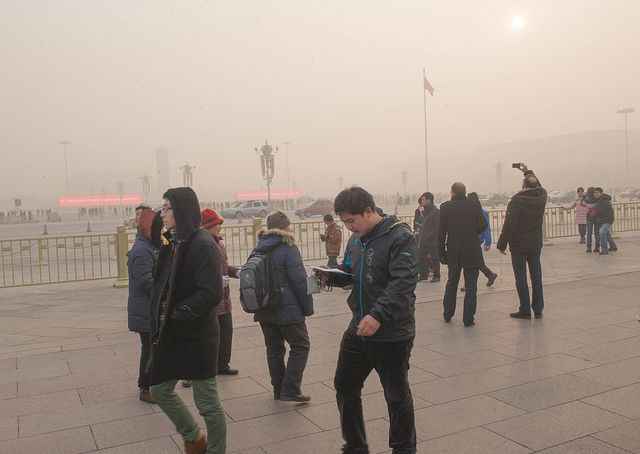Lung Cancer Most Common Cancer In China: Air Pollution Taking Its Toll With Estimates Of 7,500 Deaths Per Day

How do we understand China, home to one-fifth of the world’s population, a nation in which conditions and complexities remain half-hidden from our Western gaze? A new report illuminates one aspect of this country’s current reality — the health of its citizens. Researchers estimate China endured 2.8 million cancer deaths during 2015 and 4.3 million new cancer cases, with lung cancer the most common of all.
“Cancer incidence and mortality have been increasing in China, making cancer the leading cause of death since 2010 and a major public health problem in the country,” wrote the researchers. Quality data from population-based registries has recently become available through the National Central Cancer Registry of China, giving researchers a better view of the country's health.
To penetrate the shadows and learn more about the current situation, a team of scientists from the American Cancer Society, University of Sydney, and National Cancer Center Beijing used mortality data compiled by 72 local cancer registries to estimate the numbers of cancer deaths in China in 2015. These various registries compile data on cancer deaths from local hospitals, community health centers, vital statistics, and the Civil Administration Bureau.
Led by Dr. Wanqing Chen of the National Cancer Center in Beijing, the research team analyzed data from the years 2009 through 2011, representing 6.5 percent of the population, to estimate the burden of cancer.
Through the Looking Glass
“Almost 22 percent of global new cancer cases and close to 27 percent of global cancer deaths occur in China,” wrote the researchers. “More importantly, the cancer profile in China is markedly different from those of developed countries.”
Specifically, the four most common cancers diagnosed in China are lung, stomach, liver and esophageal cancer, representing 57 percent of all cancers diagnosed in the country. By comparison, these cancers account for only 18 percent of total incidence in the United States.
Based on the available data, the researchers estimate about 4.2 million newly-diagnosed, invasive cancer cases in 2015 in China, corresponding to an average of almost 12,000 new cancer diagnoses each day. The team also calculates about 2.8 million Chinese died from cancer in 2015, or about 7,500 cancer deaths, on average, per day.
Despite the grim news, the research team has unearthed a few positives.
Since 2006, mortality rates have decreased significantly: For males, rates have plummeted 21.4 percent per year and for females, 21.1 percent per year. Importantly, the scientists believe many of the cancer cases and resulting deaths could be prevented if people would stop unhealthy habits and behaviors. Smoking, for example, accounted for about one-quarter of all cancer deaths in China. Other risk factors may be tougher to avoid.
“Outdoor air pollution, considered to be among the worst in the world, indoor air pollution through heating and cooking using coal and other biomass fuels, and the contamination of soil and drinking water mean that the Chinese population is exposed to many environmental carcinogens,” wrote the authors.
Some efforts are being made to reduce the burden of environmental pollution in China, they say. Though the effects of these endeavors will not be felt immediately, the rates of cancer deaths could be reduced by increasing the effectiveness of care and treatment, particularly among the disadvantaged and those living in rural areas, the researchers conclude.
Source: Chen W, Zheng R, Zhang S, et al. Cancer Statistics in China, 2015. CA: Cancer J. for Clin. 2016.



























